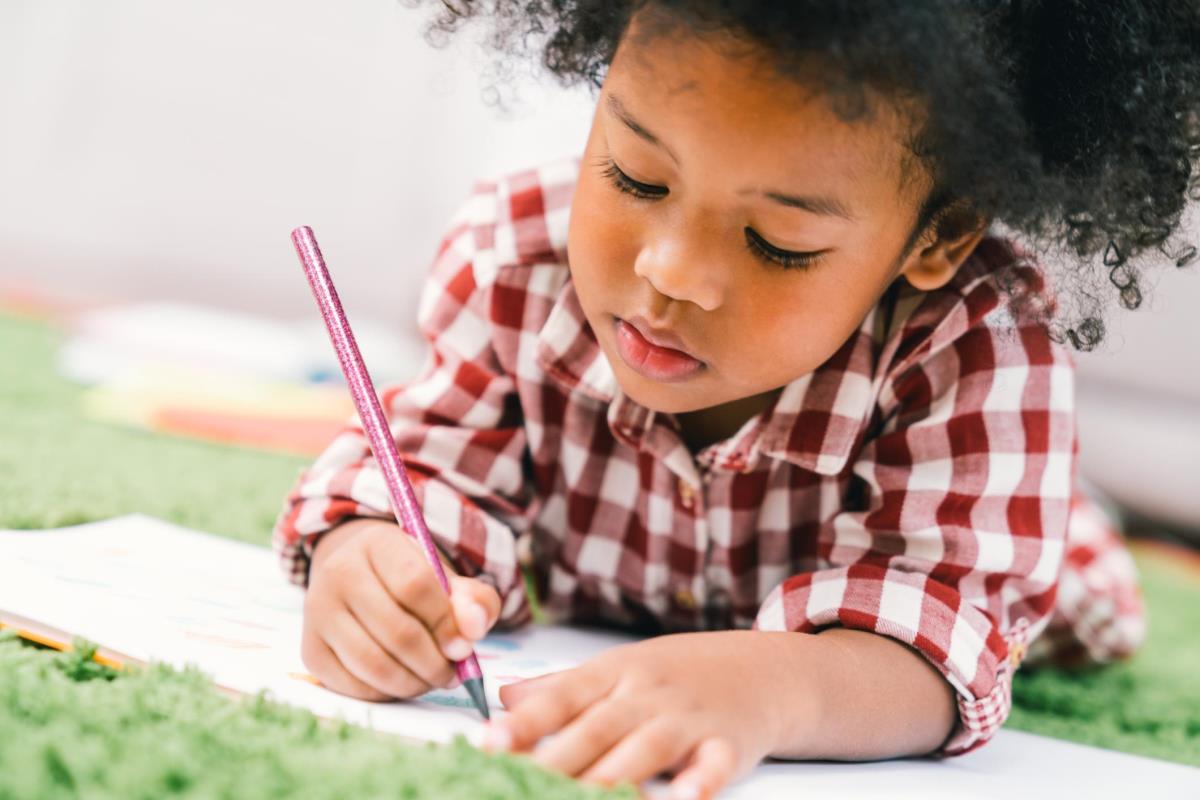Story Writing Tips for Children

Take a look at our hints, tips and activities to help you get your children to enjoy writing stories.
Benefits of story writing
All children will be asked to write or tell a story at some point, whether at school, at bedtime, or even around a camp fire. Not only is it a great creative outlet, it helps children learn to organise their thoughts and use written language to communicate in a variety of ways.
Writing stories also helps children with reading and understanding what is written by other people.
Just like adults, children don't always sit down and know what to write. Writers block happens to all of us, but there are things you can do to help.
Story Writing for Kids - Top Tips
1) Having their own notebook or journal to write down thoughts or sketch ideas can be fun and inspiring for children. Let them use it in the way they want, from drawing pictures to writing descriptions. Encourage them to scribble in it regularly, or make it a habit to suggest they write down ideas they come up with during the day.
2) Whether you are reading books together or your children are reading on their own,make sure you talk about the books afterwards. Which parts did they enjoy the most? Which parts didn't they like? Who is their favourite character? Encourage them to start a ‘word hoard’ at the back of their notebook and write down their favourite lines, words or phrases.
3) Looking at pictures together, whether it's in an art gallery, on a postcard or a magazine, this can be a way to find ideas for a story. Ask questions about the pictures and try to come up with the answers together. Remember it doesn't always need to feel like a lesson. Have fun and imagine stories together.
4) Think about events that have happened, characters they like, people they've met. Remember there are no wrong answers in brainstorming. So let their imaginations run wild!
5) Break it down. Before they start writing, have them decide on a location/setting/time period. Decide on the main character/s. Ask what they think will happen in the story, and construct a story arc – but remember this may change. Some children also find storyboards work well to plan out what is going to happen, this is especially useful for visual children.
6) Flesh out the characters. Who are the main characters? Get them to describe them to you, but don't stop with the physical attributes, try to get them to tell you more.
7) Always check your work. From an early age it's key for children to check their own work. Look for spelling and grammar mistakes, and to see if the story flows.
Story Writing Activities
Here are some ideas for writing exercises that can be fun if children are looking for an idea for a story, or need to practice their writing:
- Write a letter to a character. Who is your child's favourite story character? Whether it's Harry Potter or Winnie the Pooh, suggest they write them a letter. They can include questions they would like to ask or tell them about themselves.
- Create an alternative ending. Maybe your child is unhappy with the ending of one of the books you have read together. Ask them what kind of ending they think would be better happy/funny/open ended etc. and encourage them to write or draw an alternative ending.
- Write a story from the point of view of a family member. Have them talk to someone in your family about what their childhood was like. Have them write down their story, either from the relative's point of view, or from their own. Or they could write it down like a traditional interview.
- Make a comic or a story board. If your child prefers drawing over writing or has not learned how to write longer stories yet, this can be a great way of showing them how a story is structured. Look at comics together and discuss how they work.
- There are also plenty of useful tools online that can help your child create a comic with in variety of different styles and backgrounds.





